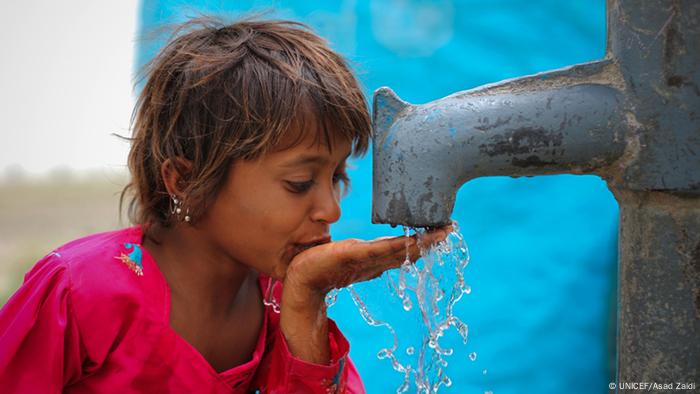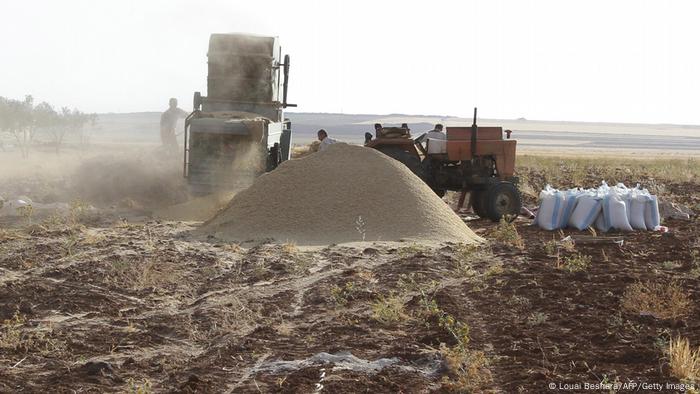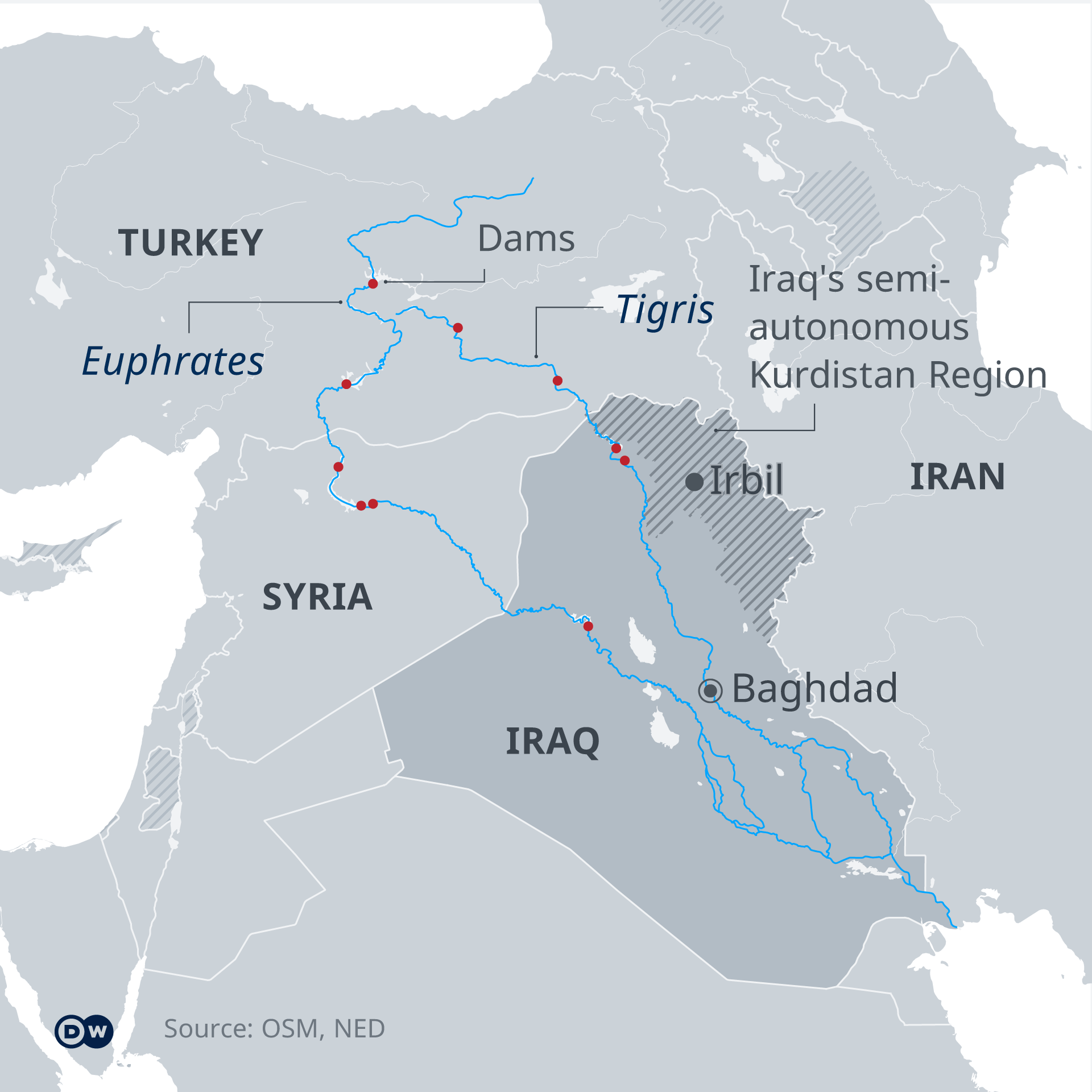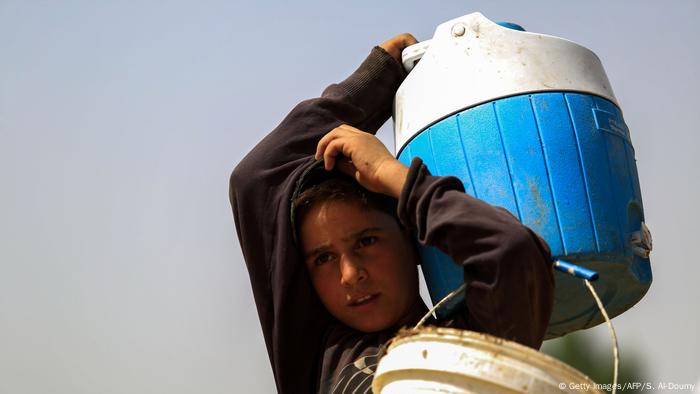How climate change paved the way to war in Syria
Researchers agree that climate change alone cannot be blamed for the outbreak of war in Syria in 2011. However, neither can it be ignored as a reason the once blossoming country has become a parched, war-torn place.
 Drought, war, and no peace in sight – life for most Syrians remains a challenge including having enough potable water
Drought, war, and no peace in sight – life for most Syrians remains a challenge including having enough potable water
“Syria serves as prime example for the impact of climate change on pre-existing issues such as political instability, poverty and scarce resources,” Jamal Saghir, Professor at the Institute for the Study of International Development at McGill University, told DW. Saghir, a former director at the World Bank, considers climate change the world’s biggest threat to security. He therefore sees the recent acknowledgment of climate change as a national security issue by US Secretary of Defense, Lloyd J. Austin III, on January 27, as game changer when it comes to recognizing the link between climate change and conflict.
 The last drought from 2006-2010 was the fiercest since droughts have been recorded, or about 900 years
The last drought from 2006-2010 was the fiercest since droughts have been recorded, or about 900 years
The dire case of Syria
In the past, Syria’s farmers have benefited from relatively fertile and productive lands, as well as the state’s promotion of staple crop production between the 1970s and 1990s. The country of around 17 million people has been hit by three droughts since the 1980s. The most recent stretched from 2006 to 2010, and was recorded as the worst multiyear drought in around 900 years.
Decreased precipitation combined with rising temperatures resulted in desertification and devastation of agricultural land, particularly in eastern Syria. Along with this, 800,000 people lost their income and 85% of the country’s livestock died.
Since crop yields had also plummeted by up to two-thirds, the country had to start importing large quantities of grain. Consequently, food prices doubled. “But the drought still continued and people were hopeless,” Saghir said, thus explaining why 1.5 million rural workers headed to the cities for work. Those who stayed were mainly impoverished farmers who became easy targets for terrorist recruiters from groups like the so-called Islamic State (IS).
A state on the brink of collapse
“Climate disruption was an amplifier and multiplier of the political crisis that was building up in Syria,” as Staffan de Mistura, former UN Special Envoy for Syria between 2014 and 2018, told DW. The crisis was aggravated by Bashar Assad’s decisions to reduce fuel, water and food subsidies over the years. In addition to water scarcity in rural areas, tensions rose between Kurds, Arabs, Alawites and Sunnis.
 ISIS sought to capture the Mosul and Fallujah dams in Iraq, as well as the Iraqi regions of Zumar, Sinjar, and Rabiah to gain control of the waters of the Tigris and Euphrates as well as water sources in Syria
ISIS sought to capture the Mosul and Fallujah dams in Iraq, as well as the Iraqi regions of Zumar, Sinjar, and Rabiah to gain control of the waters of the Tigris and Euphrates as well as water sources in Syria
“A toxic cocktail started to turn into an explosive mixture with the ingredients of the Arab Spring, the anger of losing jobs, migration to cities, as well as the purchasing power decline and the anger against the very tough and very cruel reactions by the government,” de Mistura said.
Geopolitically, the situation didn’t become any easier with ongoing competition over Syria between archenemies Iran and Saudi Arabia. “We started seeing horrible medieval sieges around many cities or villages when people were cut off from food and water, like in Homs or Aleppo,” de Mistura remembered.
When he left the country in 2018, there was less fighting, with 60% of the population under government control. “From my point of view, the country is now no longer in danger of a major war, but in danger of a collapse,” de Mistura told DW.
Infrastructure and smart water solutions become vital
According to Amnesty International, 6.6 million people have been displaced within Syria and more than 5 million people have escaped since 2011. Though the UN Refugee Agency (UNHCR) and the United Nations Office for the Coordination of Humanitarian Affairs (OCHA) say that in 2019 around 82,500 people returned to Syria, and around 412,000 internally displaced people returned to their places of origin, problematic living conditions haven’t improved. Vast parts of the country have been devastated by war, water remains scarce and infrastructure is in dire need repair across almost the entire country.
 Many regions in Syria have no access to running water, and distribution is even more difficult in the northeast due to conflicting political responsibilities
Many regions in Syria have no access to running water, and distribution is even more difficult in the northeast due to conflicting political responsibilities
“Assad has almost won the territorial war but is still very far from winning peace,” said de Mistura at an online conference hosted by Berghof Foundation and the Potsdam Institute for Climate Impact Research (PIK). Former World Bank director Jamal Saghir agrees: “For peace, you need reconstruction,” he said and added that any peace agreement needs to be backed by an investment package.
However, Syria itself won’t be able to finance its reconstruction and it remains to be seen if either of its allies Russia or Turkey will be willing to invest in Syria’s future.
According to Saghir, it is obvious what needs to be done: “It is imperative to make Syria more resilient by helping transitioning the region to a more energy and water-secure infrastructure.”
The views expressed in this article do not necessarily reflect the views and editorial stance of the SOHR.

